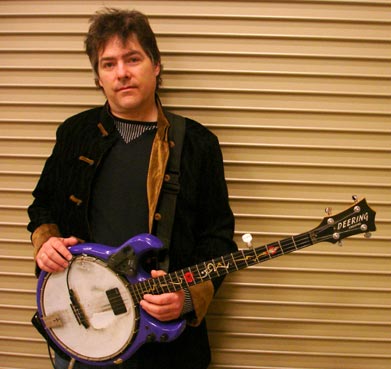 Musical genres can be helpful for fans: They allow music to be categorized; grouped with other artists that sound similar. If you like Metallica, you will probably like Slayer. If you like Chet Atkins, you should check out Tommy Emmanuel. (If you like James Ingram and Michael McDonald, please, check out Jeff Giles.)
Musical genres can be helpful for fans: They allow music to be categorized; grouped with other artists that sound similar. If you like Metallica, you will probably like Slayer. If you like Chet Atkins, you should check out Tommy Emmanuel. (If you like James Ingram and Michael McDonald, please, check out Jeff Giles.)
Genres also allow people to make broad generalizations about what sort of music they like (e.g. “I love metal” or “I like everything except country”). Whether such statements are good or bad is subjective, but as a musician myself, I think they are limiting. I tend to hear music structurally, and find things to like and dislike in every genre. I don’t want to do away with genres, but I do appreciate artists who run up against the walls from time to time, and expose people to music that they have never heard before.
Few musicians in history have done more to blow up boundaries between styles of music than virtuoso banjo player Béla Fleck. Nominated for more different Grammy award categories than anyone in history (and a nine-time winner), Fleck has ripped the banjo from its strict confines as a bluegrass instrument and stretched its boundaries into almost every genre of music. Combining an improviser’s soul with a virtuoso’s technique and dedication to his craft, Fleck crosses between jazz, bluegrass and classical music with ease and aplomb.
Though some fans doubtless believe that the banjo sprang fully formed from Earl Scruggs‘ hands in the 1940s, the truth is the roots of the instrument are in West Africa, in traditional instruments like the Akonting. In 2005, Béla Fleck went to four countries in Africa with a film crew, with the goal of meeting, playing and recording with traditional African musicians, to seek out the roots of the banjo and to expose his sizeable fan base to new and beautiful music, which has a hard time reaching American ears. The result is Throw Down Your Heart, both an album available now, and an award-winning documentary tracing Béla’s journey, which debuts in New York on April 24.
On March 27, Béla was kind enough to take a few minutes to talk to us about the film, the album, and a few other matters before his soundcheck for that evening’s concert.
Let’s talk about Throw Down Your Heart. I read that you had some concept of wanting to go to Africa after you found out that the banjo’s roots were African, but talk a little about how it actually came together in 2005 and how you actually got out there.
Yeah, I’ve been loving African music for a long time, and every time I hear something acoustic or rhythmically interesting I get excited and I want to know more about it. So along with that, knowing the banjo originally came from there, combined to be an irresistible thing to do, but it took until 2005 to do it. That was a year the Flecktones took a year off — the first year we took off in 15 or 17 years of being a band. We had always been full-time. So I was looking for something really fun and different to do that year, that I normally wouldn’t have time to do. It’s impossible to take six weeks in the middle of a Flecktones year, so all of a sudden I had the time, and this was the project I most wanted to do. I guess part of me was thinking it would be quite a big effort. If I’m going to be traipsing around Africa, I’d rather do it in my 40s than my 60s.
You went to Uganda, Tanzania, Gambia and Mali. Why those particular countries, and was the order significant?
Yes. The West African countries (i.e. Gambia and Mali) are easy, because I was looking for the roots of the banjo, and those are West Africa. In Gambia there’s been some research recently, and people had been telling me about these Akonting players in Banjul. There”™s been some ethnomusicology studies done on these people and there’s a lot of signposts pointing to the idea that they are playing a forebear to the banjo, and the music they play is quite a bit similar to the slave music that was played in the United States. Mali is the place where the musicians are almost like jazz musicians, and I was particularly in love with Oumou Sangare’s music.
She’s wonderful, yes.
 Ever since I heard her music, that’s another reason why I wanted to go to Africa, I just loved her so much. That was West Africa, and then of course it expanded to all the other Malian musicians. Once I knew I was going to Mali I just started studying up and discovered all these amazing people and got to record with quite a few of them.
Ever since I heard her music, that’s another reason why I wanted to go to Africa, I just loved her so much. That was West Africa, and then of course it expanded to all the other Malian musicians. Once I knew I was going to Mali I just started studying up and discovered all these amazing people and got to record with quite a few of them.
East Africa (Uganda and Tanzania) is another story. I had a friend who brought tours over to East Africa on a regular basis. Not musical tours so much, but tourist-type things. She pitched this idea to me of going over and doing a “Banjo Safari” where we sit around the campfire and I teach people to play the Banjo, in Africa. I said I wouldn’t go to Africa and not play with traditional musicians. That’s why I would go to Africa, I wouldn’t go to teach banjo. She said well, I can help you connect with that too. And she had access to Tanzania and Uganda. She started sending me these little clips of musicians that she had recorded with her little portable mp3 player or whatever, and sent them to me and I got kind of hooked and curious. She started telling me about the giant marimba, et cetera. So I did a bunch of research on those areas, and simply because I had access, and I trusted her that she could do something, I went with it, and I found some great things to do in those countries.
Let’s talk about the marimba. It’s one thing to read there is an eight-foot long marimba in Uganda, and another to watch the film and see it. This beautiful hand-carved eight-foot long instrument”¦to hear it, it’s just amazing. When all those people were playing it together, it sounded almost sequenced, like a synthesizer.
Yeah! I know what you”™re saying.
So you had heard that in the recordings from your friend?
Yeah. Of course, they”™re just crappy little recordings. So I couldn’t tell quite what was going on but I could tell there was a lot. It was a big mystery.
That leads to another thing I wanted to ask you about, and something I was glad was in the film, was the herculean efforts of your recording engineer, Dave Sinko. That must have been a real test of his skill to record all of these instruments. There was a scene of him putting a microphone under the giant marimba and discussing recording scenarios with you. That must have been a real challenge of doing this, thinking about how to record all of this music.
Absolutely. That was a big part of it. It was an adventure in every way. It was an adventure musically for me. It was an adventure for Dave. I played some part in the planning, we would look at these musicians, we would pull out the microphones and we’d go “How are we going to record this?” Putting together the kit of gear to bring over there. Trying to figure out what we were going to need over there was quite interesting. I don’t think that you could have made recordings like this even 10 years ago, the way we did, on battery-powered multi-track recorders. We could actually record up to 14 tracks at one time, outdoors on battery power.
Wow. That’s really incredible.
And a little box, too. Not much bigger than a laptop. Four times as thick as a laptop, but not much bigger, and it does all that stuff. It’s a different time.
And it really does come through on the record. It’s a very intimate sounding record. The opening track, “Tulinesangele,” where you”™re playing along with the Ugandan women singing a cappella, it really does sound like you”™re standing right next to them when you listen to it.
Yeah. It was a small space, maybe 10 feet across. This round building we were in. A little cook hut. I’m glad that came off that way. I’m very proud of the recordings.
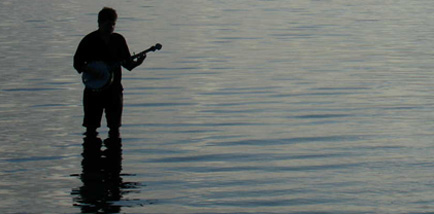 Something I was struck by when watching the movie was the level of facility, and virtuosity, that these musicians have on their instruments. Anania Ngoliga from Tanzania, Ruth from Uganda. They’re wonderful. Do you think there is anything universal that leads people to put in all these hours of practice, in pursuit of facility or virtuosity?
Something I was struck by when watching the movie was the level of facility, and virtuosity, that these musicians have on their instruments. Anania Ngoliga from Tanzania, Ruth from Uganda. They’re wonderful. Do you think there is anything universal that leads people to put in all these hours of practice, in pursuit of facility or virtuosity?
I think what happens is that when you put talented people in front of instruments, and they play them for many, many years, they naturally develop, the same you might with speaking or singing…people get really, really good at stuff. If you are a musician, you’re supposed to be really good at playing your instrument in a variety of ways, as support for singing, as a soloist, in a group. The great musicians I ran across all over the world understand those rules. They know how to be in time, they know how to play hot, and it seems to be more consistent than you would even expect.
In the movie we see you, in some cases, writing out actual melodies in tablature, and in some cases you”™re improvising and playing along. I know you”™ve spoken at times about the conflict between the jazz/bluegrass improvised “in the moment” playing, and the more classical “practice until it”™s perfect” method. How did you decide which approach to take in each situation, as you were meeting all of these great musicians?
It was usually pretty obvious. Either it wasn’t going to be possible for me to write it out and learn it and play it with someone because either I didn’t understand it, or there simply wasn”™t enough time in which case I had to be a jazz musician, or there was time and the music was consistent enough that I could learn it and play it. If, for instance, I could meet them one day and record [their music] on my little recorder and take it and practice it that night, and write things out, that was another way I could play notes directly with them. And I wanted to do both. Part of the trip was about throwing myself into unknown situations and seeing what would come out, and that was more improvised. Other times it was like “How can I really learn this piece?” and play it like I’ve been playing it my whole life, and there was no way around it but writing it out.
One scene I wanted to ask you about — I thought it was the funniest scene in the movie. You were playing in Tanzania, in a nightclub I believe, and you were soloing with a band, and a man just walked right up on stage and put money in your shirt.
That’s right. [laughter]
I was wondering if there were any anecdotes of that sort from the trip. Funny things that happened that didn’t make the film?
Actually, [putting money in a musician’s shirt or instrument mid-performance] is a custom over there.
Is it really? That’s really interesting.
That’s what they do. Before I came on stage, they were doing it with the other musicians. Throwing money on stage, putting it in someone’s guitar. That’s why we included it in the film. Hopefully people will start climbing on stage and throwing money at us. [laughter]
I could just see that at Bonaroo, people jumping the barricade. [laughter]
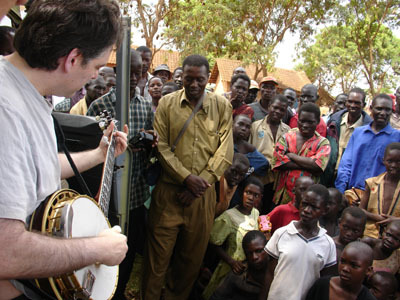 When you got to Gambia, and met the akonting players, the ancestral banjos, what was it like to play with them, and play those instruments, and hand your banjo to the akonting players?
When you got to Gambia, and met the akonting players, the ancestral banjos, what was it like to play with them, and play those instruments, and hand your banjo to the akonting players?
It was cool. I felt more like brothers with them than with anyone else. Also with Bassekou Kouyate from Mali, who plays a sort of miniature banjo (i.e. an “n’goni“). It was really cool. Some banjo players get fretless banjos, and that’s basically what these guys are playing. You can slide and fudge the notes up and down a little bit, but there’s not a lot of sustain, so it doesn’t last too long. I got them to play my banjo, and they play in basically a very old time style, a clawhammer style. They don’t play tunes that we know. I was hoping to find some song that would be [recognizable as] the birth song of some fiddle tune that we still play. I didn’t hear that. But I heard a lot of funky cool stuff. It was fun to play their instruments, but more fun to listen to them play.
You described some of the Gambian music you play in the film as being somewhat similar to bluegrass, but with different time signatures and different rhythmic emphases.
Yeah. Very pentatonic. A lot of bluegrass has a pentatonic quality.
I know from your Flecktones material, there’s a lot of odd meter playing and polyrhythmic and complicated playing — it”™s one of the things that”™s so great about your music. Is that one of the things you enjoyed about the trip, the ability to play rhythmically complex stuff, not a 4/4 sort of experience?
I love getting away from the backbeat. What I found is that there were a lot of things in different kinds of sixes and nines and threes, that sounded like…I don’t know I just couldn’t relate to them. That was what I ran into again and again. I didn’t run into things in seven, or five. I ran into a lot of groups of three. And they did play in four, but it was more common for them to play in three, or nine.
You mentioned that the Malian musicians were more like jazz musicians. More western. Was it easier to jam with them? Was it more like other musical situations you had experienced?
Yes. Especially if I improvised, freely. It was more like I was playing with jazz players. The difference is if I tried to play their language, if I tried to play the guitar lines that Djelimady was playing and not just play my own stuff, I was like “Oh no” (chuckles) “that’s hard!” And when I tried to learn Bassekou [Kouyate]”™s songs, they were different, and the way they played fast was different than the way I play fast. So it caused me to have to decide how to play on different songs, and whether to be myself, or be more colored by what they did. And I liked it the most when I was changed. In a lot of cases, though, I just played like me, and they played like them, and we met in the middle.
You mentioned Djelimady Tounkara — he’s an amazing guitar player. The track you wrote with him (“Mariam”) is one of my favorites on the record. There are scenes in the film of the writing process and the recording of that song. How long did that take to write, and record?
I think we had two rehearsals. The first day we came up with the basic lick. Another day, I came up with the bridge. Then we went in the studio. I think we played it four times. Play through in the studio, listen to a take or two, then play it again. That sort of thing. We played it for an hour so. It came together pretty quick. Then I listened to everything and chose the best material from those four takes.
The whole album is great, but as a guitar player myself, that’s the track that has that almost bluegrass “cutting duel” kind of feel to it. Sort of like “Keep up.” (laughs)
Yeah, he was struttin’.
I want to make sure we talk about Oumou Sangare. Her music is really beautiful, and she was obviously a big part of the film. You play two of her originals on the album, and the one I want to call out is the ballad “Djorolen,” which you arranged for just vocal and banjo. It’s an absolutely stunning, beautiful arrangement. I wanted to know why that particular song was chosen, and what your approach was in arranging it.
It’s really weird, but I wasn’t even thinking of that song. My girlfriend said “that’s one you gotta do.” We were listening to [Oumou Sangare’s] records all the time. I put it on my list of maybes. Then I started to realize there was another way to do it than the way she had done it. I started hearing it with different chords. It was starting to come to me, and I didn’t know if she would go for it, but I would just listen to the song and keep working on the chords and eventually I found this…I kept coming back to this harmonization of the song, and then I just thought it would be so cool if it was just the two of us, really sparse and open, and drifting. Ironically, for me, it was hard to play that slow, and for her it was hard to play the song that fast. But it really sounds good right in the middle.
I’ve not yet heard the original, but I’m definitely going to track it down, because it’s such a gorgeous arrangement with you and her playing.
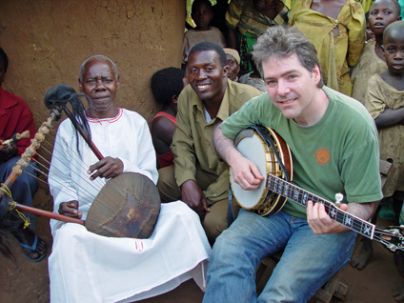 I know you”™re out on the road in support of this record now; how are things going?
I know you”™re out on the road in support of this record now; how are things going?
We did our first show last night, and are in the middle of soundchecks for the second show right now. The first night was great. It was a lovefest, everyone was happy. The audience loved it. It was sold out. A good start. I know there will be ups and downs, but we’re off to a good start, that”™s for sure.
Do you play any Flecktones or Bluegrass material with the African musicians, or any standards or other sort of covers?
BF: No, it’s all things either off the record, or things that they know. They each play a few pieces on their own, than I come out and we play something together, and then I bring on the next one. There’s four artists. At the end we all get together. It’s fun.
I saw on your website there might be two separate tours with different groups of musicians. Is that correct?
BF: I think there will be a variety of things that happen. This first tour is four artists. [Toumani Diabate – the kora master from Mali, Vusi Mahlesela – guitarist, vocalist from South Africa, D’Gary – guitarist, vocalist from Madagascar, Anania Ngoliga – thumb pianist, vocalist from Tanzania]. next time will just be me and Toumani Diabate. Oumou is touring the states in July, and I”™ll be able to play some of those dates with her. Then in August, I”™m doing the duo with Toumani again. Then in February and March we’ll do another big tour like this one, where we”™ll bring some different artists over.
Must be one of the nice things about this project. You have a lot of options about how to play it live.
Yeah, and it’s all a learning experience. Like after this tour, we”™ll know how far ahead we want to keep doing it and how crazy it is, or how much it works, you know? It’s been fairly petrifying, what it would be like to tour, but early indications are that it”™s going to be a smash.
I have a few questions off the film, if you have time. I know you played with Zakir Hussein in New York City recently, and wrote and recorded an orchestral piece with Zakir and Edgar Meyer.
Yes. That project is coming out in September; we”™re just finishing the mixes and stuff right now.
Also, I had heard another interview you did where you expressed the desire to do other genre-crossing albums, possibly an Indian album, possibly an Irish album of pub and session music. Number one, I think that’s a great idea, and there’s probably no person who has ever lived better qualified than you to do it.
Thank you.
Is there any chance, since it would be hard to do a film like this again, that your idea could be a cable series?
I love that idea, I’ve thought about an HBO series or something, an hourlong show, a number of hours in each country — I’d love to do that. Hopefully someone will get the bright idea to ask me to do it. (laughs) If that doesn’t happen, I’ll be looking for someone to be the producer of the next film, and we’ll decide where that should be when that time comes. There’s lots of exciting places. South America is another one. There’s so much great music down there to get involved with. China. The Far East in general. There’s so much…It’s a beautiful world. Now, I could do something like this every five years, maybe. It would be a fun thing to keep doing.
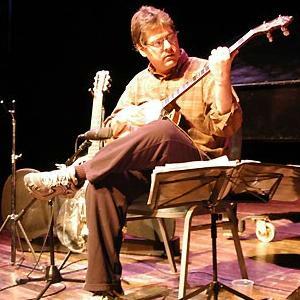 You balance between genres so beautifully in general, walking between jazz, bluegrass and classical, it seems natural that any acoustic music, in all of its permutations, why wouldn’t you want to expose that to a larger audience — drawing on the audience that has followed you through your career?
You balance between genres so beautifully in general, walking between jazz, bluegrass and classical, it seems natural that any acoustic music, in all of its permutations, why wouldn’t you want to expose that to a larger audience — drawing on the audience that has followed you through your career?
I like that. Even with my American stuff, I always love turning the audience on to people that I like. That they have never heard before. Be it a tabla player, or a great guitar player. Some surprising guy, I get excited. It’s selfish, it’s all self-serving (laughs).
Purely NON-altruistic.
Feeding my ADD.
Everyone who is a fan of yours knows you picked the banjo up while you were in high school in New York. You were first steeped in the Earl Scruggs tradition, and went to jazz from there. When you decided “I want to play jazz on the banjo,” what were some of the songs you arranged for banjo, that made you realize “I can do this, this can work?”
One of the first ones was “Spain,” by Chick Corea. I realized that could work on the banjo, and that was an eye-opening experience. Before that, I had tried to work out some Charlie parker bebop heads. And they all seemed possible, but it was hard. Hard on the banjo. The more I did it, the more natural it got. Every six months, I’d try again on this one Charlie Parker solo until I learned it, and I realized that it was all possible. It’s all about opening up my head. It takes years and years to learn jazz. The doors keep opening for me. More and more, I understand what’s going on.
When I was young, someone gave me a Charlie parker omnibook in C, and I threw myself at it, and I never really conquered it. It’s very difficult music and a lot of it doesn’t lay very well on guitar.
Once you get used to it, you can find a way for it to lay. You just have to learn different hand positions, how to hold your hands to play that music, which is different than even other kinds of jazz. Parker is almost like Bach, in that he goes through the 12 keys but uses chromatic notes in other places.
I should get going for soundcheck — I’ll give you one more question.
I was going to ask about the Christmas album, but instead, let me ask what’s next for the Flecktones. You’ll be on tour with them at the end of the year. Are you going to be back in the studio any time this year?
Not this time. This two-year block where we”™re doing the Christmas project, that’s all we’re doing. After that, we’re going to get together and talk about what the next project will be. Everyone is enjoying the time, doing their own stuff, but we”™re also looking forward to doing the holiday music again at the end of the year. Jeff Coffin is now a member of the Dave Matthews Band, so he”™s going to be doing part of the tour, and we have a surprise for the other part. We have another person coming, but we’re not quite ready to announce that yet.
So we should watch the website for that?
Yes.
Great. Thanks so much for taking the time.
My pleasure. Have a good one, and thank you.

![Reblog this post [with Zemanta]](http://img.zemanta.com/reblog_e.png?x-id=9469381a-8191-46a9-b914-e8fb29e27ccd)



Comments